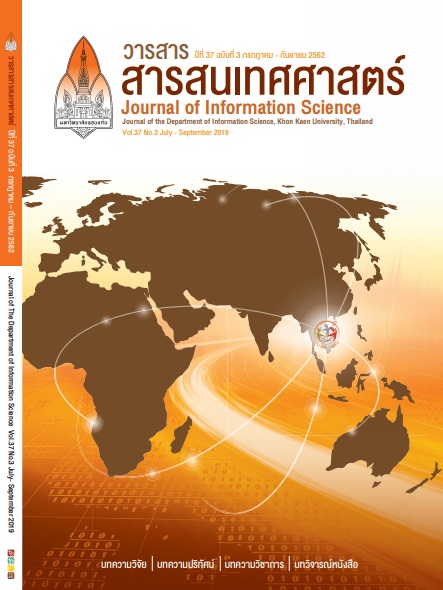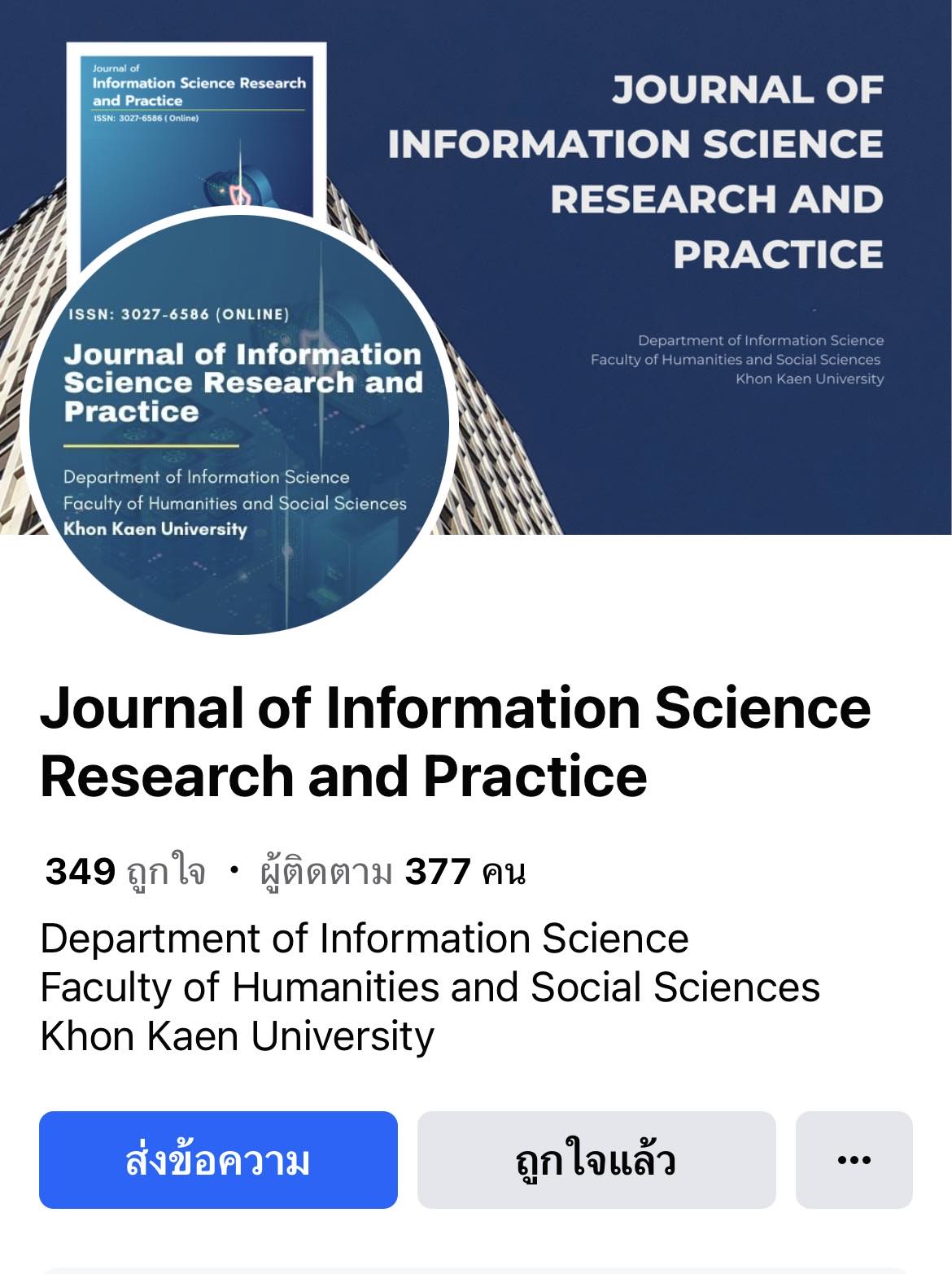System Design for Semantic Web of Thai Historical Events
DOI:
https://doi.org/10.14456/jiskku.2020.16Keywords:
Historical event, semantic web, system analysis and designAbstract
Purpose of the study: Systematic design for semantic web of Thai historical events.
Methodology: This study use research and development methodology comprised 2 processes including (1) to study and compare semantic web or system that serve data and information related historical in Thailand and worldwide and (2) to analysis and design the semantic web of Thai historical events. It comprises 3 sections including process, data layer and user interface analysis and design.
Main Findings: The system comprised 3 layers including (1) Data layer is a layer for data storage and retrieval in relational database schema. (2) Semantic layer can link to another system with linked data technic and (3) Application layer can process system function and interact with user on Web-based application. The system has 22 data tables, 8 core functions, and 4 linked data about event, person, place, and object.
Applications of this study: That can be used system structure and necessary components for system development phase. These was prepared for the development of semantic web of Thai historical events.
Downloads
References
Academic Services and Research Center for Cultural Heritage and Archaeology (ARC). (2014). Database of Archaeology Site in North Eastern of Thailand. Retrieved November 11, 2014, from http://www.archae.su.ac.th/art_in_thailand
Isaac, A. (2011). Introduction to SKOS. Retrieved January 11, 2014, from https://www.w3.org/2004/02/skos/references
CHIP, (2019). CHIP Project Homepage. Dutch Science Foundation. Retrieved August 10, 2019, from http://chip.win.tue.nl/home.html
Eoseewong, N., & Wongted, S. (2006). Summary: Historiography and ethnicity of Thailand. (In Thai). Bangkok: Suvarnabhumi Museum.
Fine Arts Department. (2014). Geographic Information System of Cultural Heritage Site. Retrieved November 11, 2014, from http://www.gis.finearts.go.th
Hyvönen, et al. (2009). The Semantic Web: Research and Applications, Lecture Notes in Computer Science (pp. 851-856). Springer Berlin Heidelberg. Retrieved September 19, 2014, http://link.springer.com/chapter/10.1007/978-3-642-02121-3_69
MultimediaN N9C Eculture Project Homepage. (n.d.). (2019). Retrieved August 10, 2019, from http://multimedian.project.cwi.nl/
Ott, M., & Pozzi, F. (2011). Towards a new era for Cultural Heritage Education: Discussing the role of ICT. Computers in Human Behavior. 2011 Jul;27(4):1365-71.
Princess Maha Chakri Sirindhorn Anthropology Centre (SAC). (2014). Databases of Archaeology Sites in Thailand. Retrieved November 11, 2014, from http://www.sac.or.th/databases/archaeology
Sae-Jueng E., & Tuamsuk K. (2019). Knowledge Organization of Historical Events in Thailand. Proceeding at the 2nd International Conference on Social, Economy, Education, and Humanity (ICoSEEH 2019) September 5-7, 2019. Universitas Islam Riau, Pekanbaru, Indonesia.
Shelly, G. B., & Rosenblatt, H. J. (2009). Systems Analysis and Design. Cengage Learning.
Thai World Heritage Information Centre(THAIWHIC). (2014). The World Heritage Site in Thailand. Retrieved November 11, 2014, from http://www.thaiwhic.go.th
Zeng, M.L.,& Mayr, P. (2018). Knowledge organization systems (KOS) in the semantic web: A multi-dimensional review, International Journal on Digital Libraries, 31 p. pp. 1-22. DOI: 10.1007/s00799-018-0241-2.








